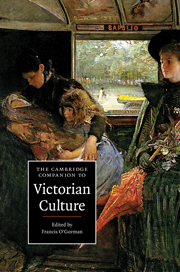9 - Satirical print culture
Published online by Cambridge University Press: 28 July 2010
Summary
One of the most notable innovations in nineteenth-century literary culture was mechanical rather than imaginative: the printing machine introduced by the London-based German inventor Friedrich Koenig in 1811. It replaced the old-fashioned rectangular hand-press with a more efficient, steam-powered, cylinder, thereby hugely increasing publishing capacity. Over the succeeding decades technology developed to the point that by the mid-1850s the wonderful machine had increased production ten-fold and beyond, from around 500 printed sheets per hour to more than 8,000. To give but one instance, the most successful London daily newspaper, The Times, saw its print capacity multiplied at a stroke as a result of these innovations. Pre-Koenig, in the first decade of the nineteenth century, the paper had daily runs of between 2,500 and 3,000 copies, but by 1855 it sold around 60,000 per diem. This rapid growth in sales of the 'Thunderer', as it was nicknamed, is indicative of the expansion of print culture in the Victorian era. From the 1830s onwards there was both an insatiable appetite for print and, for the first time, the means to satisfy that craving, making this period the first era of mass-market publishing in Great Britain.
Facilitated by the contemporary industrialization - as it might be called - of print culture, some entrepreneurial publishers turned their attention to the needs of what E. P. Thomson has taught us to think of as the newly made working class. If the era from the 1720s to the 1740s – according to orthodox literary history – was the period in which the emergence of the English novel catered to the cultural tastes of a newly literate middle class, then, a century later, the decades from the 1820s to the 1840s are often seen as the age in which, in analogous fashion, ‘penny literature’ served the literary appetites of a nascent working-class reading public.
- Type
- Chapter
- Information
- The Cambridge Companion to Victorian Culture , pp. 156 - 176Publisher: Cambridge University PressPrint publication year: 2010
- 1
- Cited by



